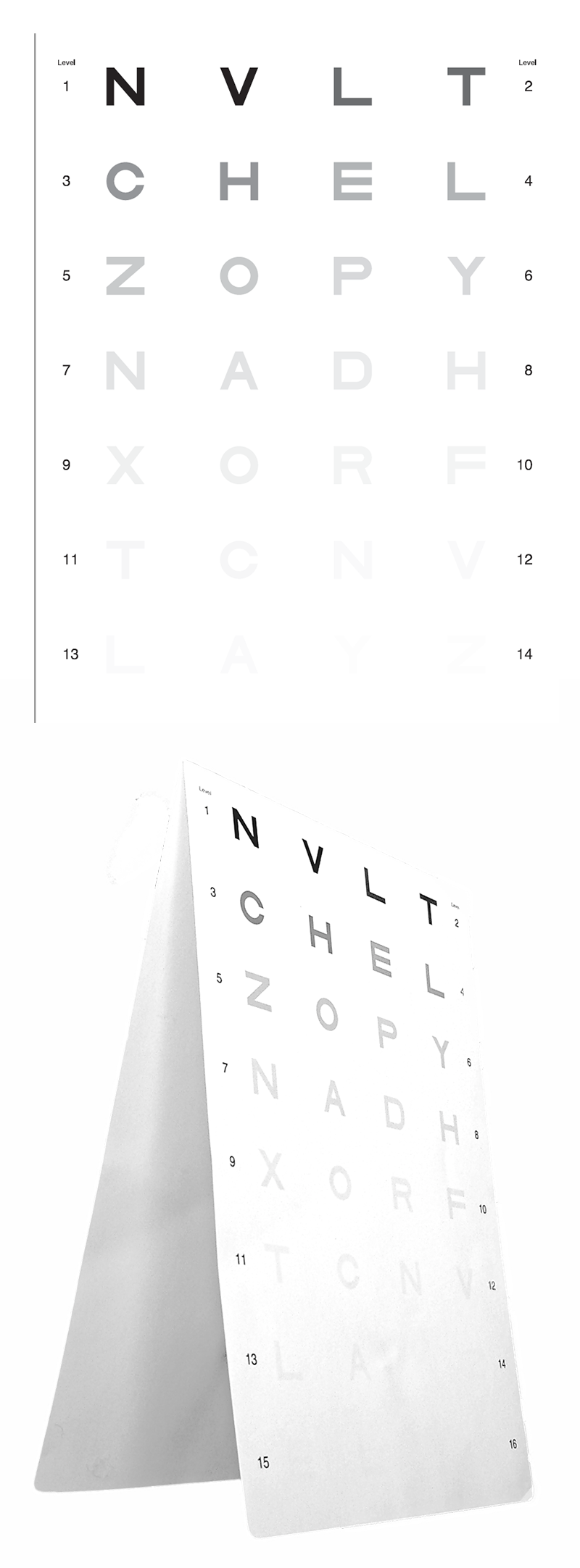Contrast Sensitivity Test
This measures a visual threshold by keeping the contrast of an object high and constant, whilst varying the spatial separation. An alternative method to measure a visual threshold is to use a contrast sensitivity test, which varies contrast than spatial separation.
Test development.
The Pelli-Robinson Chart was developed in 1988, and is accepted as the clinical “gold standard” for measuring contrast sensitivity. It is based on evidence that the peak contrast sensitivity, which it measures, is the most important single feature of the contrast sensitivity function for predicting performance in everyday tasks (such as reading and mobility). The contrast sensitivity function is then especially useful when it is used in conjunction with the cut off frequency of visual acuity.
Why Measure Contrast Sensitivity?
The visual acuity of a patient may be normal, but there may be a lowered contrast sensitivity function at low and intermediate spatial frequencies.
The Test as a Clinical tool
The Hamilton-Veale test can be used to monitor a decrease in the contrast sensitivity function over time. Often, even though a patient is provided with the best possible refraction, they complain they are not seeing clearly. This test can be used to reiterate the need for more task lighting when reading or performing close tasks. Elderly will often comment on the difficulty of seeing in poor light or at night. The test may explain this difficulty, due to a loss of contrast sensitivity function.
Conditions most affecting contrast sensitivity:
- Age (especially over 60 years)
- Glaucoma
- Slight cataract
- Intraocular lens implantation
- Keratoconus
- Diabetic retinopathy
- Macular oedema
- Optic neuritis
- Multiple sclerosis
- Parkinson’s disease
- Optic nerve compression
- Papilloedema
Size: 300 x 200 mm
ENQUIRE NOW

